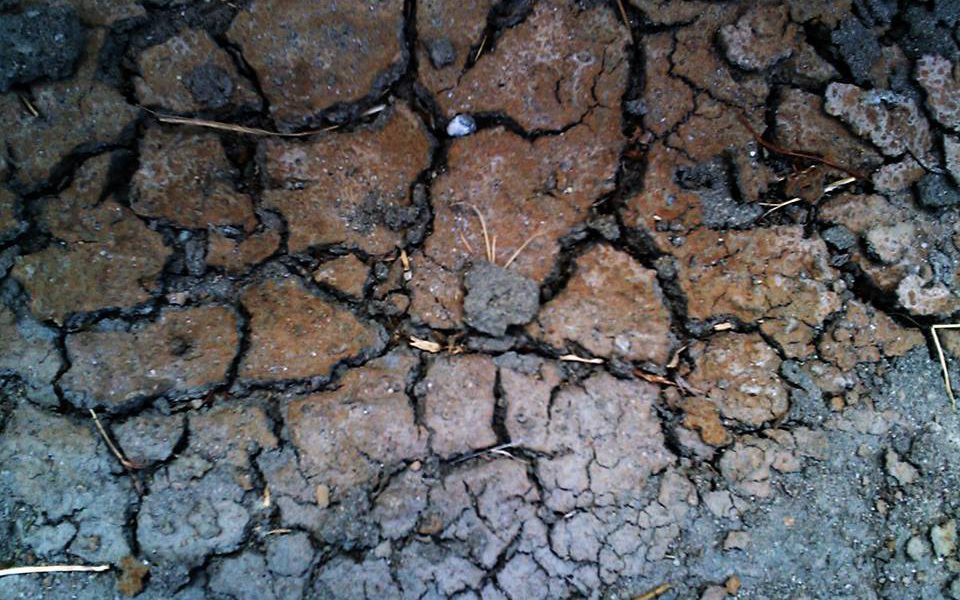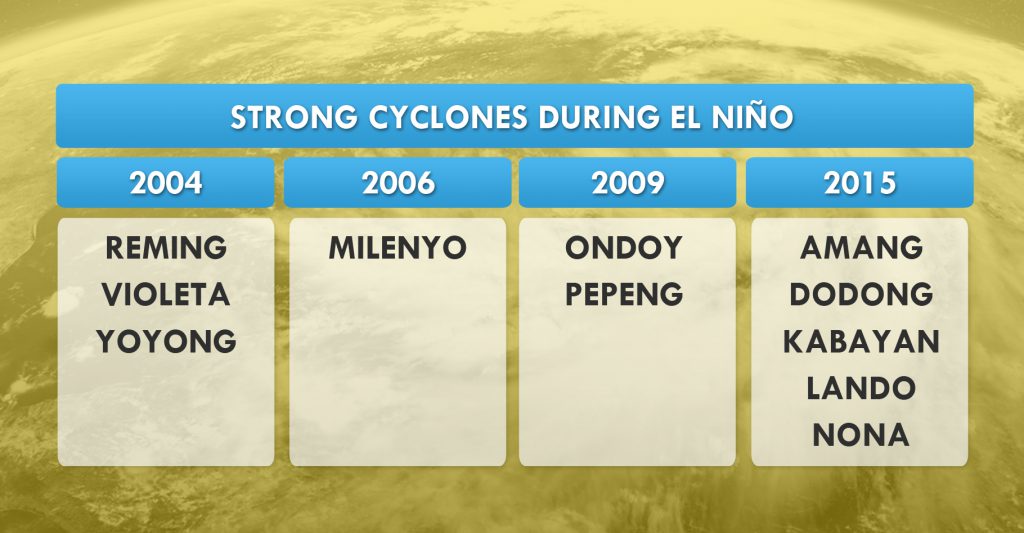Home > Blog > Weather
Typhoons occur during El Niño – True or False?

The El Niño phenomenon indicates the unusual warming of the Pacific Ocean, which happens every two to seven years, typically in the final quarter of the year. And although this happens in the ocean, its effect is massive, taking its toll on economies at local and global scales.
Last February, PAGASA warned the public about the weak El Niño that will prevail until May, bringing droughts in many parts of Luzon and Mindanao. In spite of the reduced rainfall in the country, can storms still prevail?
A resounding TRUE.
The Philippines is situated in the Western North Pacific where an average of 20 cyclones cross our area of responsibility every year. Climatological observations of PAGASA show that some of these extreme weather events have happened during El Niño.

A List of Strong and Devastating Cyclones during the El Niño Phenomenon in Recent Years
These local names, except for Yoyong, Amang, Dodong and Kabayan, were removed from the list of cyclones to prevent psychological relapse among survivors. Ondoy is just an example of a disastrous storm in the presence of a strong El Niño phenomenon.
The El Niño phenomenon is part of the natural climate variability. This will be felt in provinces away from the ocean such as the Climate Type III area, which is relatively dry from December to February or from March to May. Currently, the connection between global warming and the increased frequency of El Niño trends is still inconclusive.

Climate Map Based on Rainfall
Climate Type III is mostly enclosed by land. Hence, these regions rely on rains for water supply.

Average Number of Cyclones that will enter the Philippine Area of Responsibility
According to PAGASA, tracks of cyclones are forecast to become stronger with erratic northward tracks.

